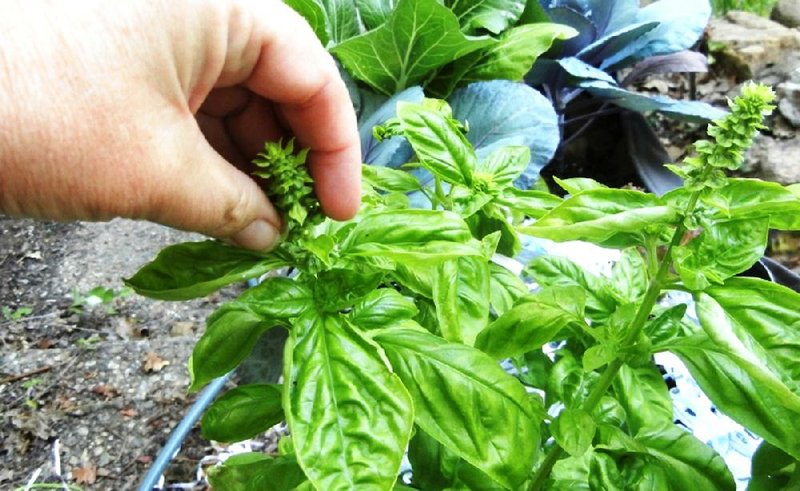LITTLE ROCK — THIS MONTH
Deadhead spent blossoms on blooming annuals to encourage more blooms.
Pinch the flowers off herbs to encourage more leaves.
Mulch your garden to conserve moisture, moderate soil temperature and prevent weeds.
Brown lawns are already commonplace. Water as needed.
Plants in containers benefit from quick daily showers, but a light sprinkling really doesn’t cut it for plants that are in the ground.
Flower beds, lawns, shrubs and trees need a slower, steady flow that can penetrate the ground.
Fertilize annual and tropical flowering plants. Follow the label directions, but we usually need to fertilize every two to three weeks - if not more often - to keep these flowering plants flowering.
Be careful if using fertilizers or pesticides on hot, dry days.
Plants that are heat- and drough stressed will be more susceptible to burn. Make sure there is ample water in the ground before treating them, and water fertilizer in.
Powdery mildew is awful on our crape myrtles right now. Hot weather should slow it down, but heavily infested trees may not bloom well. You can spray with a fungicide, but it will take multiple applications, and mildew is tough to control once it’s established.
If you are planting new crape myrtles, opt for mildew-resistant varieties. Check out the Cooperative Extension Service list at tinyurl.com/7ay6ubl.
Our days have been quite warm, but we are still having pleasant weather at night, so vegetables should be doing well.
Remember that tomatoes normally stop setting fruit when daytime temperatures exceed 95 or when nighttime temperatures stay above 75. If we do get a downpour, we will probably see some blossom-end rot. This looks like a disease but is actually a calcium deficiency brought on by fluctuating moisture. Mulching and even watering go a long way in preventing this problem.
If you haven’t pruned and fertilized spring-blooming shrubs such as azaleas and forsythia, get it done. Their bloom period finished earlier than normal and may set flowers early this summer or fall.
JUNE LESSON
We have many flowers and plants that are blooming well now. The reason for a flower is to set a seed. Most gardeners want to see loads of flowers and we aren’t as interested in the seeds.
If you have annuals and perennials that are setting seed heads instead of more flowers, you need to deadhead them.
Deadheading is a practice where we clip off the spent flower as soon as it is beginning to decline. This puts energy back into the plant and will give you more flowers. Heavy bloomers like gaillardia (blanket flower) and the Stella d’or daylily set a seed head for almost every flower. If you aren’t deadheading, you are looking at a plant covered in seed pods and not flowers.
Summer spireas, crape myrtles and butterfly bushes will also set seeds and stop blooming. If you clip off the spent flowers, they will bloom several times during the growing season.
If you are growing annual herbs like basil, keeping the plant from flowering will keep it growing and full and bushy. If you allow it to bloom, it will try to set seeds, and you won’t have much new growth.
HomeStyle, Pages 33 on 06/02/2012

